In today’s world, no IC design is completed without instantiating a few or many pre-verified or already proven intellectual property (IP) blocks. With break-neck pace at which chip designs are advancing, many IP blocks may even be entire chip designs from earlier product releases. Third-party IP market has been growing at a healthy rate over the years, estimated to have crossed the $5B mark in 2021. When combined with the in-house IP portfolio of semiconductor companies, the sheer amount of IP leverageable for chip designs is enormous.
WEBINAR: IC Manage Holodeck AWS Marketplace Edition Brings Cloud to the EDA Masses
While access to a large pool of IP blocks is nice, is that sufficient for the success of a chip design project? What is the process that is followed for selecting the IP blocks for a particular project? Is the choice of IP blocks to be made solely based on first hand prior use knowledge? When the accessible IP portfolio was small in size, the task was a lot easier. But that is no longer the case. The choice of IP blocks plays a critical role in the success of a chip project. Just as an investment portfolio needs to be managed effectively to maximize the value that can be generated from it, so should an IP portfolio. An IP portfolio is after all made up of assets in the form of valuable pieces of IP blocks. Mike Whalen, VP WW Sales at IC Manage, addresses the topic of large IP portfolio management for complex chip designs. He recently gave a talk, sharing what IC Manage has learned over the last decade, supplying software for IP portfolio management.
IC Manage is a company that provides design data and IP management, Big Data Analytics, Hybrid Cloud Bursting, and High-Performance Computing software to semiconductors, systems, Internet of Things and artificial intelligence IC companies.
The following is a synthesis of the salient points from Mike’s presentation at SAFE Forum 2021.
IP Repository
IP development costs have risen dramatically over the last couple of decades. The rise has been driven by both the complexity of the IP themselves as well as the number of IP blocks developed. From a business perspective, it makes sense to try to amortize these costs over as many projects as possible. In order to effectively reuse IP, a repository is needed to organize and store the metadata attributes that make up the IP so that it can found, used, improved and tracked across any number of projects. IP portfolios have become major tangible assets for semiconductor companies.
Requirements for Effective Management
One-Stop Shop
A single repository for all the IP makes it easier to search and find the IP needed. The repository should include not just design source data but other data as well such as EDA flow scripts and verification tests. All of these data are needed to check the IP or make modifications to it. Stored metrics such as area, power, maximum frequency, compatible process node, quality levels, etc., make it easier for the right IP to be found.
IP Search
Search pages should be context aware to the category of IP being searched for. For example, when searching for digital IP, the parameters available to use for the search should be different than for analog IP search. This kind of search methodology makes it easy for finding the right IP from among a vast IP portfolio. A well-organized IP repository also offers flexibility to create groups and subgroups of IP components so that users can narrow down their search to particular categories of IP.
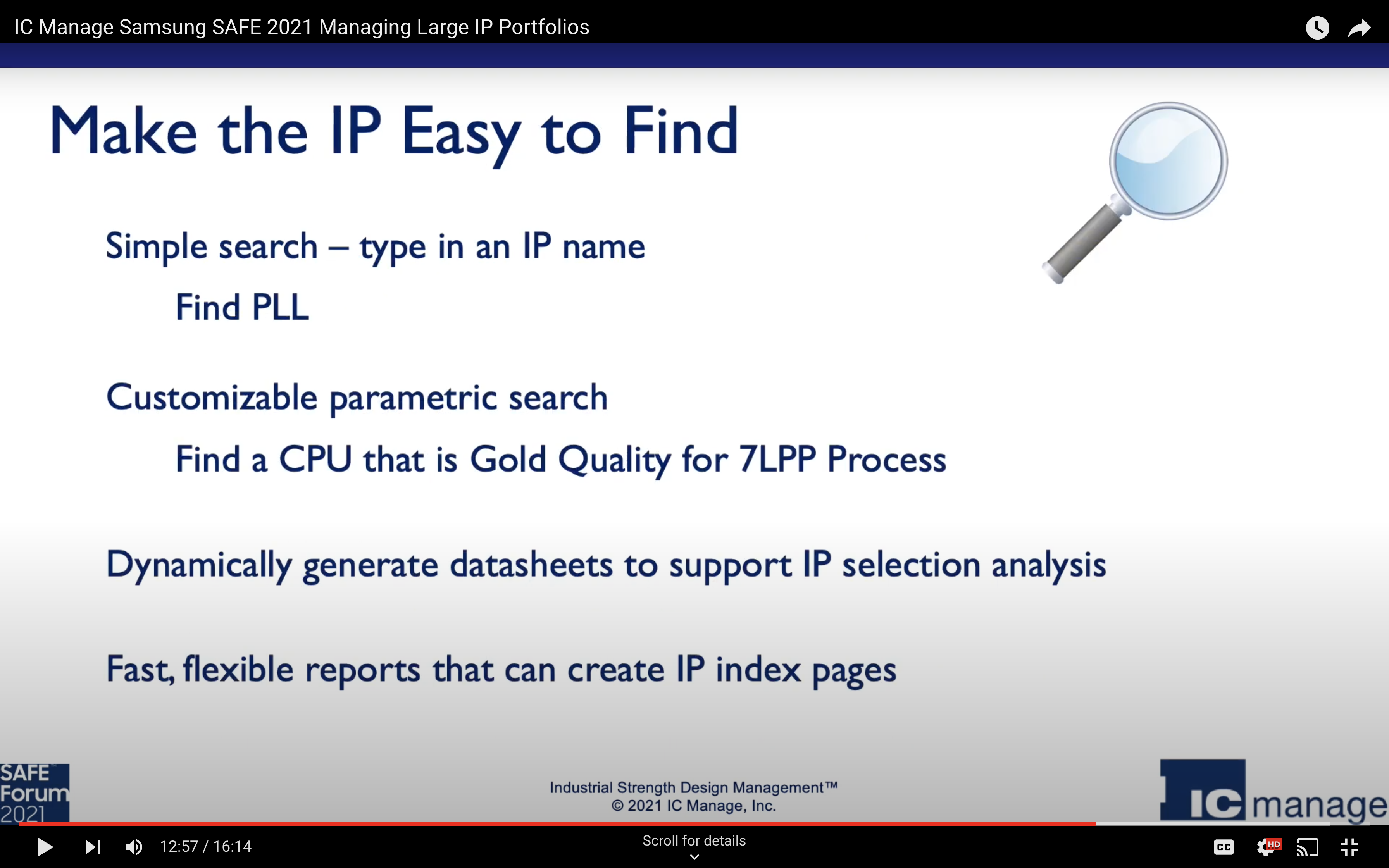
As an example, IC Manage Global Design Platform Product (GDP-XL) allows for a context-aware configurable search.
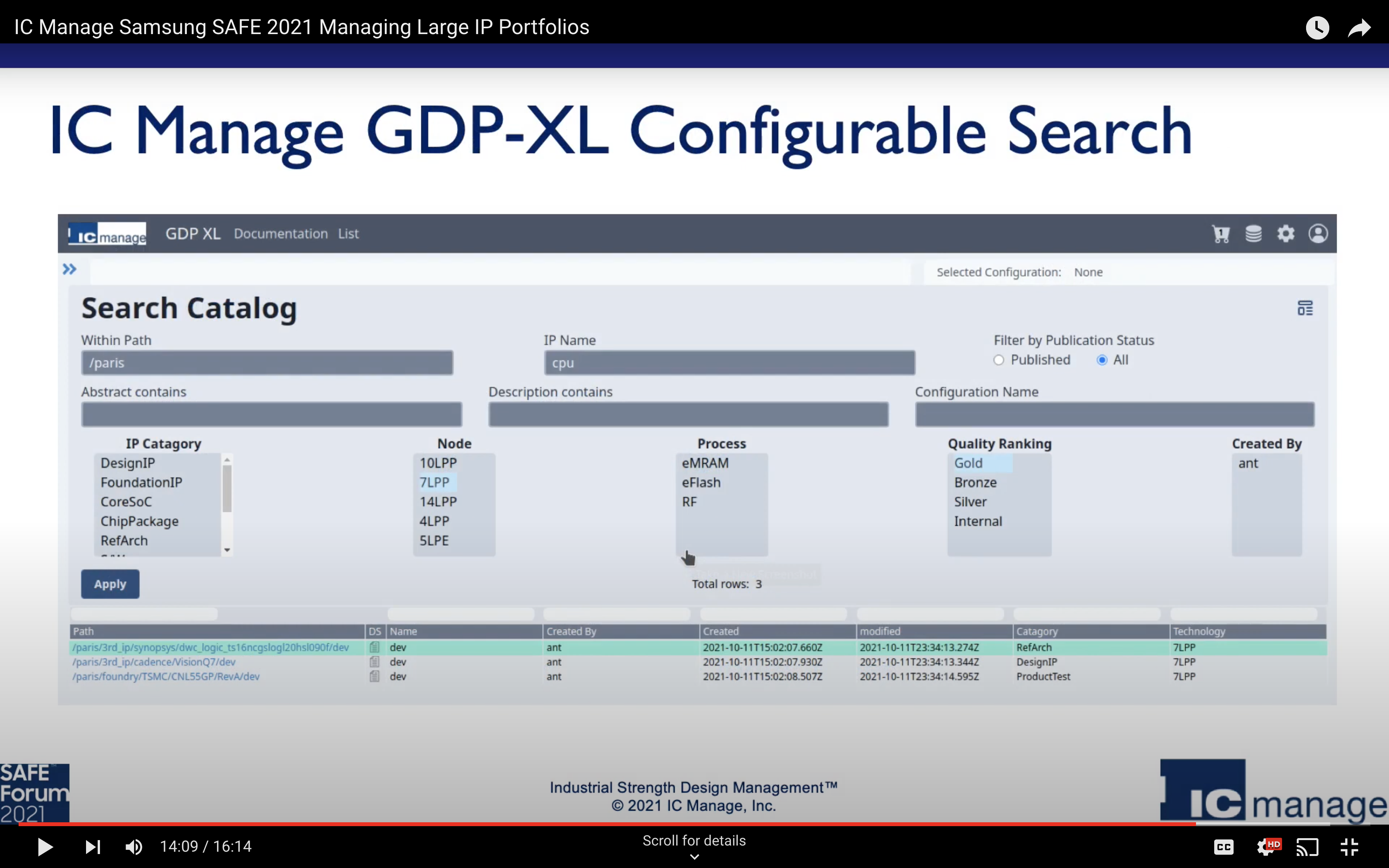
And GDP-XL platform displays IP datasheets that include context aware attributes of IP based on the category of IP being searched for.
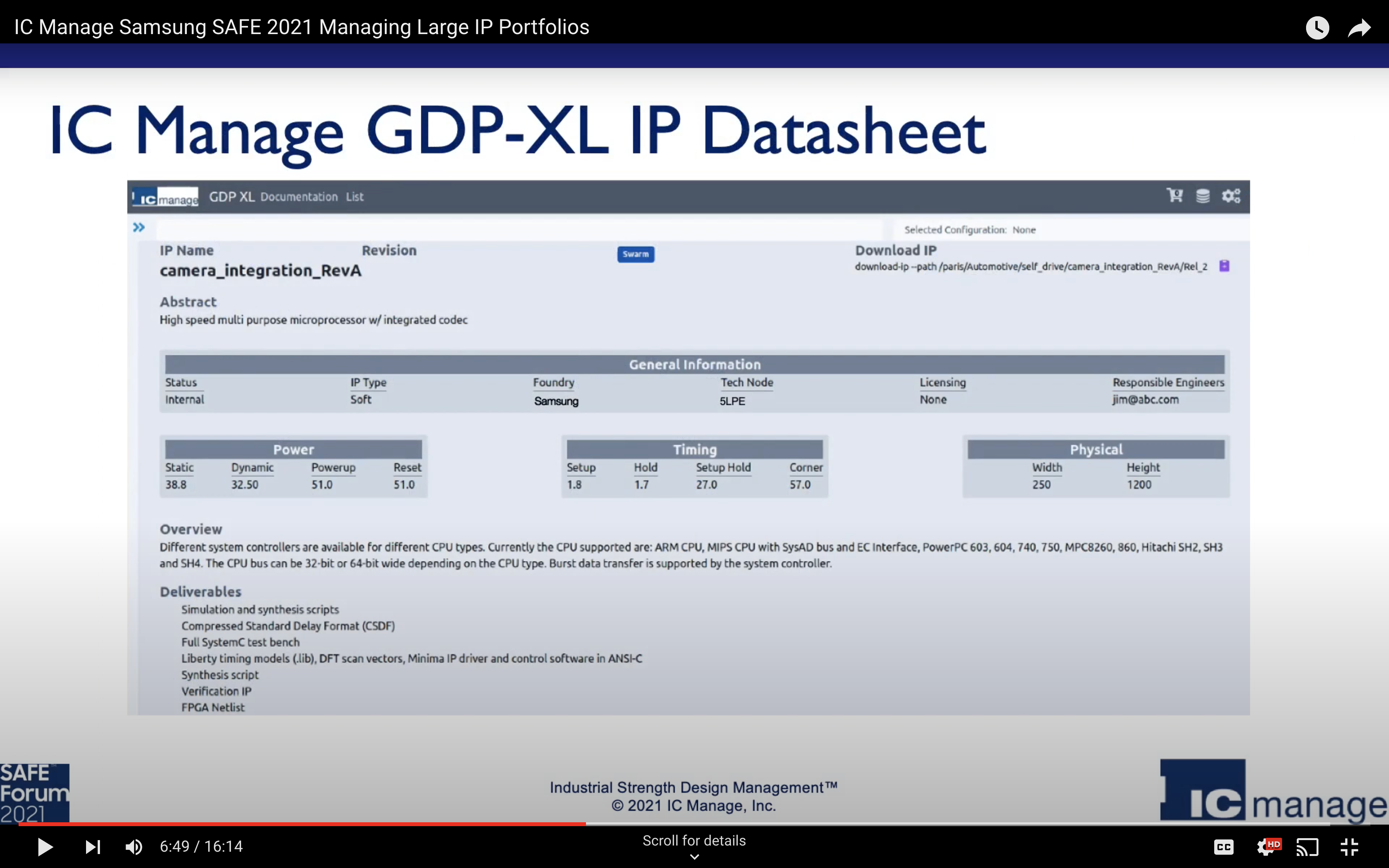
Automation
EDA tools generate a rich set of simulation and implementation results that can be extracted and annotated as IP attributes in the repository. As the metadata attributes of an IP changes over its lifetime, real time automation of updates of these metrics are important to avoid error prone manual updates.
Integration
An IP repository needs to tie in to other systems in use for design and manufacturing. These requirements include bug tracking, code review, continuous integration, product life cycle management systems to name a few. This kind of integration allows querying for and updating of external systems that hold additional data applicable to IP as they are created, released and used in new products.
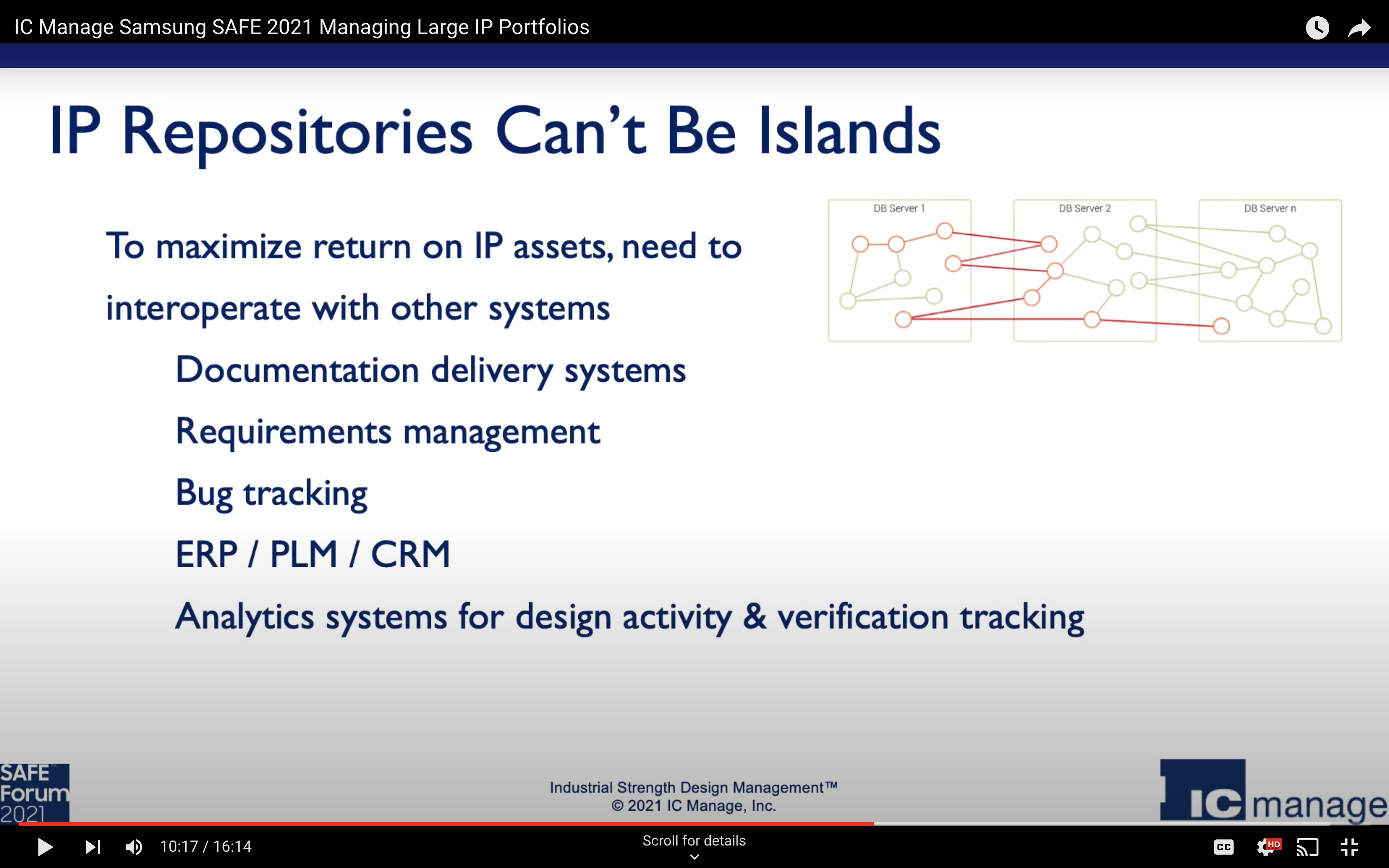
IP Assembly
A well-managed integrated and automated IP repository is also central to the IP integration/assembly process. A higher-level IP core involves many levels of lower-level IP blocks. Ensuring that a higher-level IP block release includes the right releases of all sub-level IP blocks is essential.
Scalability and Traceability
The IP repository needs to be able to support globally distributed teams of users. And should be able to support updates and deliveries in real time. The system should also be able to alert users of new releases that become available and what chips/products use these releases. Users should also be alerted when a new release fixes a bug. And when a new serious bug is found, all projects using the IP should be notified. Traceability is key to understanding the evolution of an IP block, and the code changes that were made for bug fixes or new features. This kind of traceability is especially required for compliance reasons in the automotive and medical device markets.
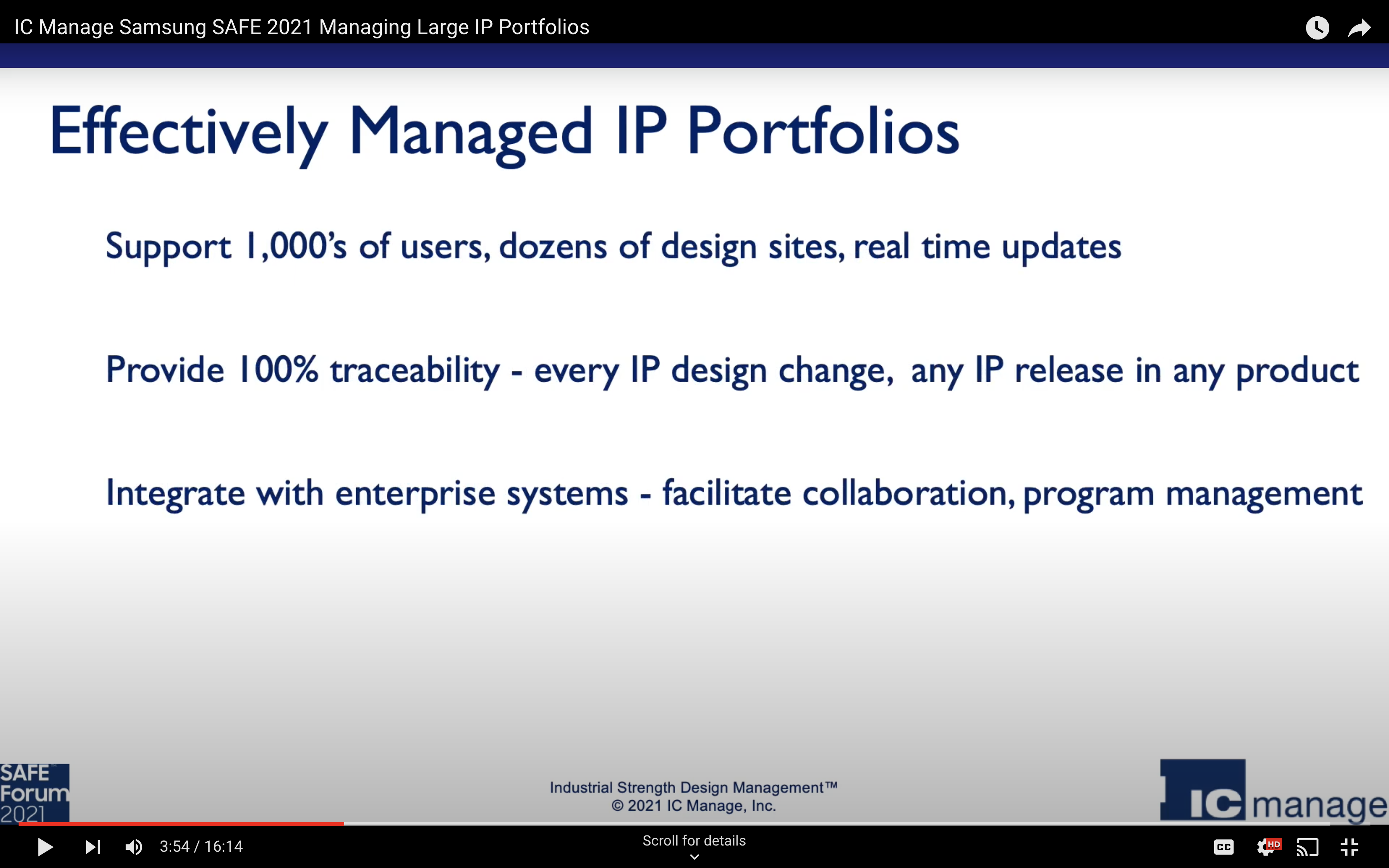
Also Read
CEO Interview: Dean Drako of IC Manage
Data Management for the Future of Design
Share this post via:
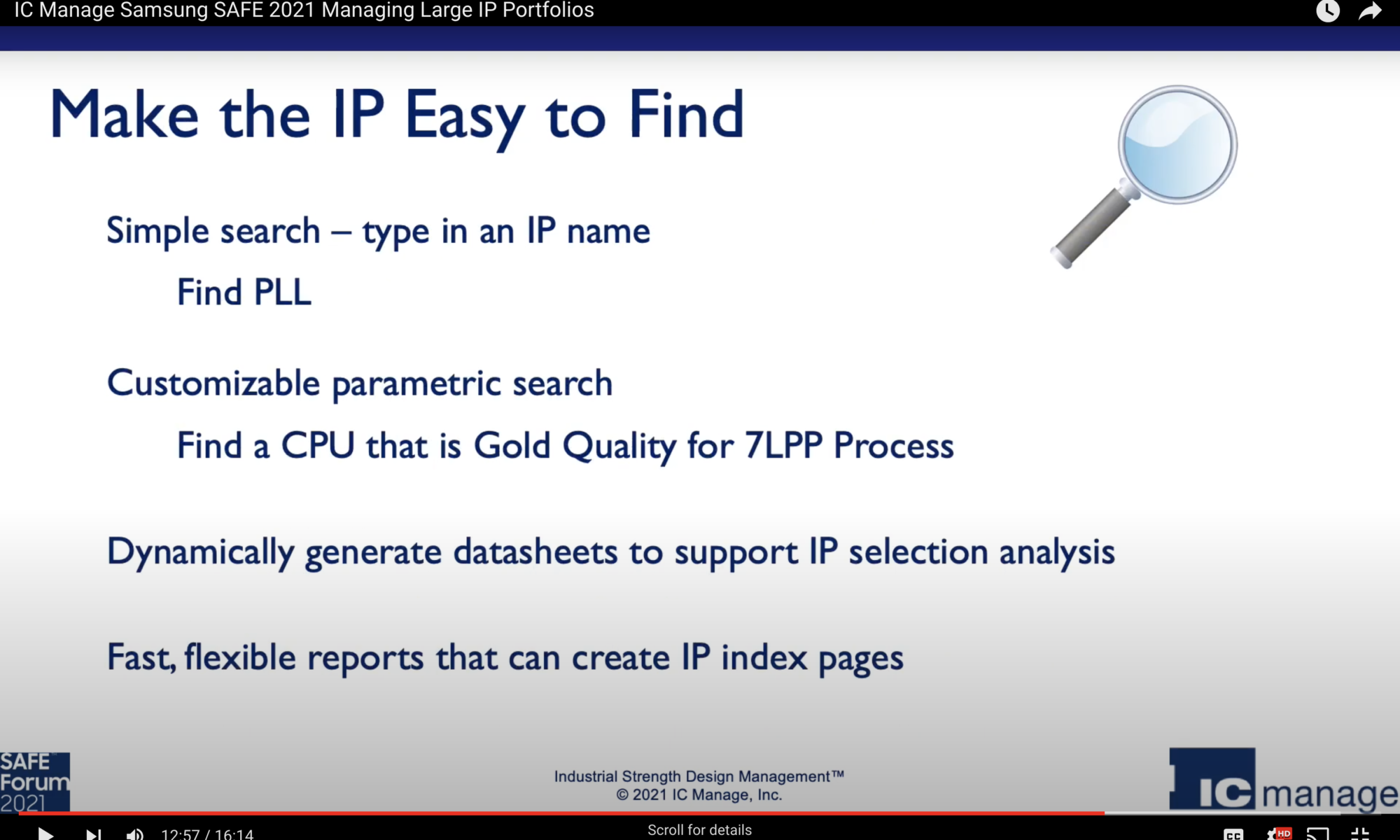







Quantum Computing Technologies and Challenges